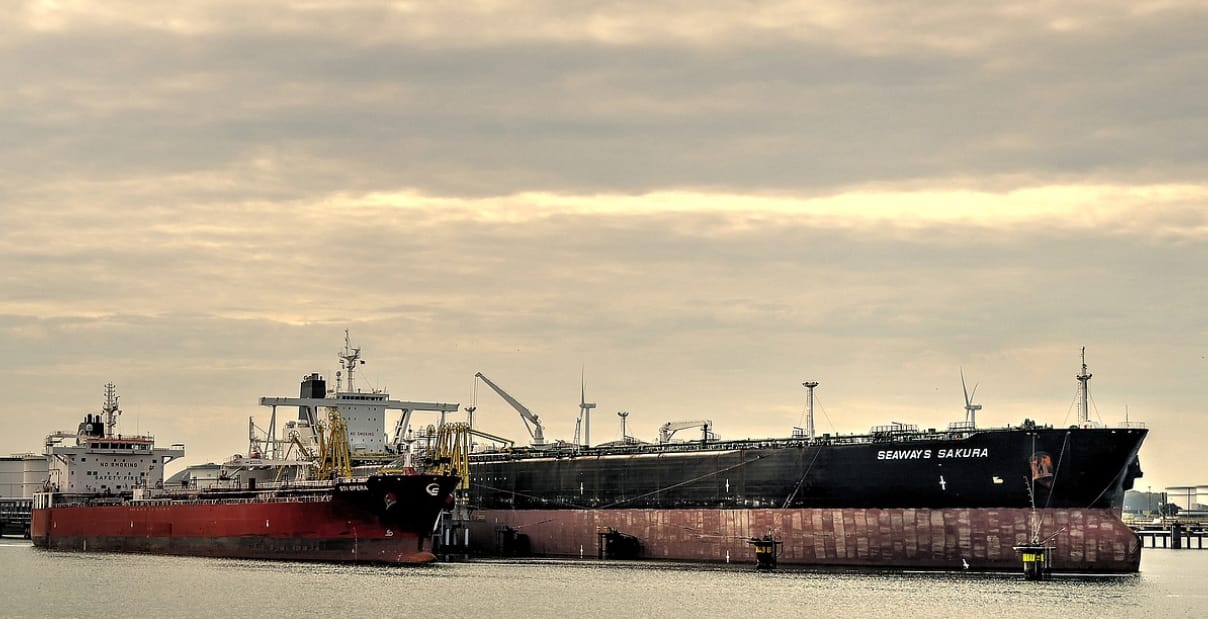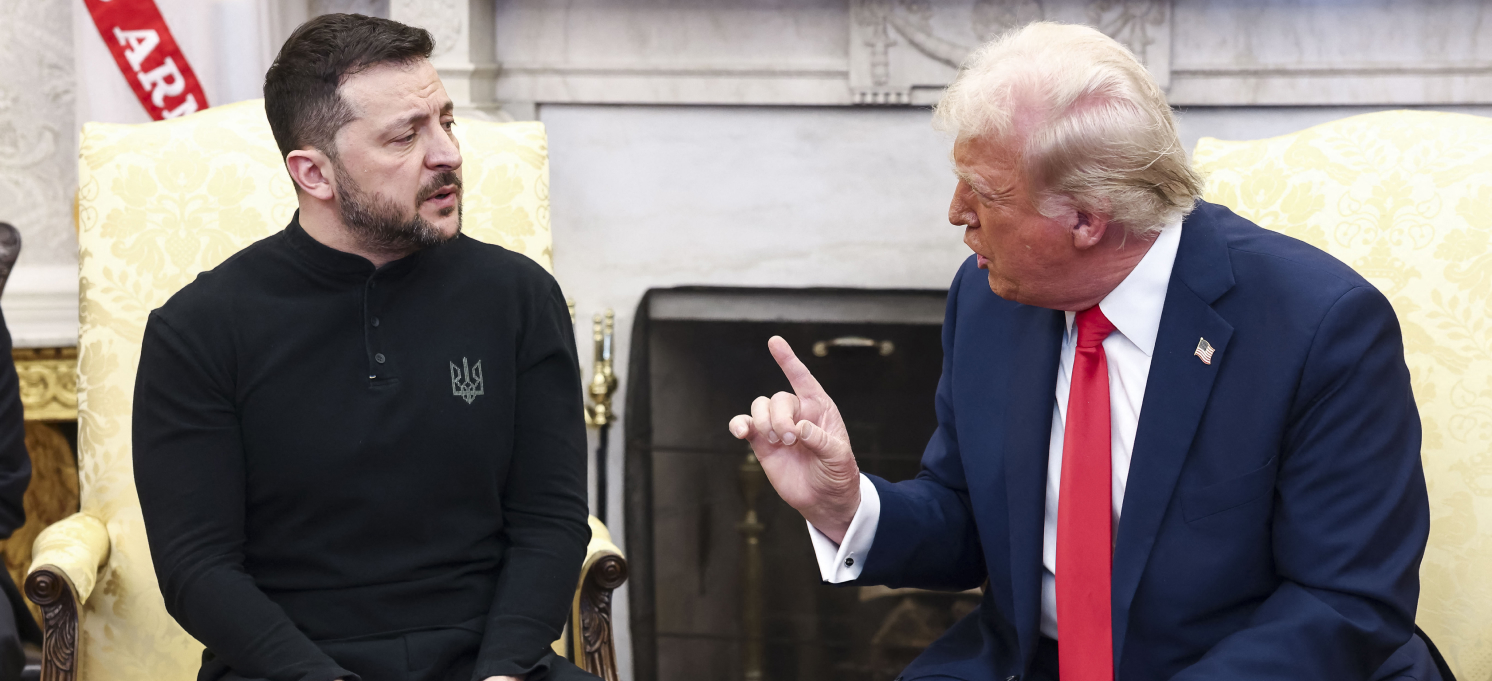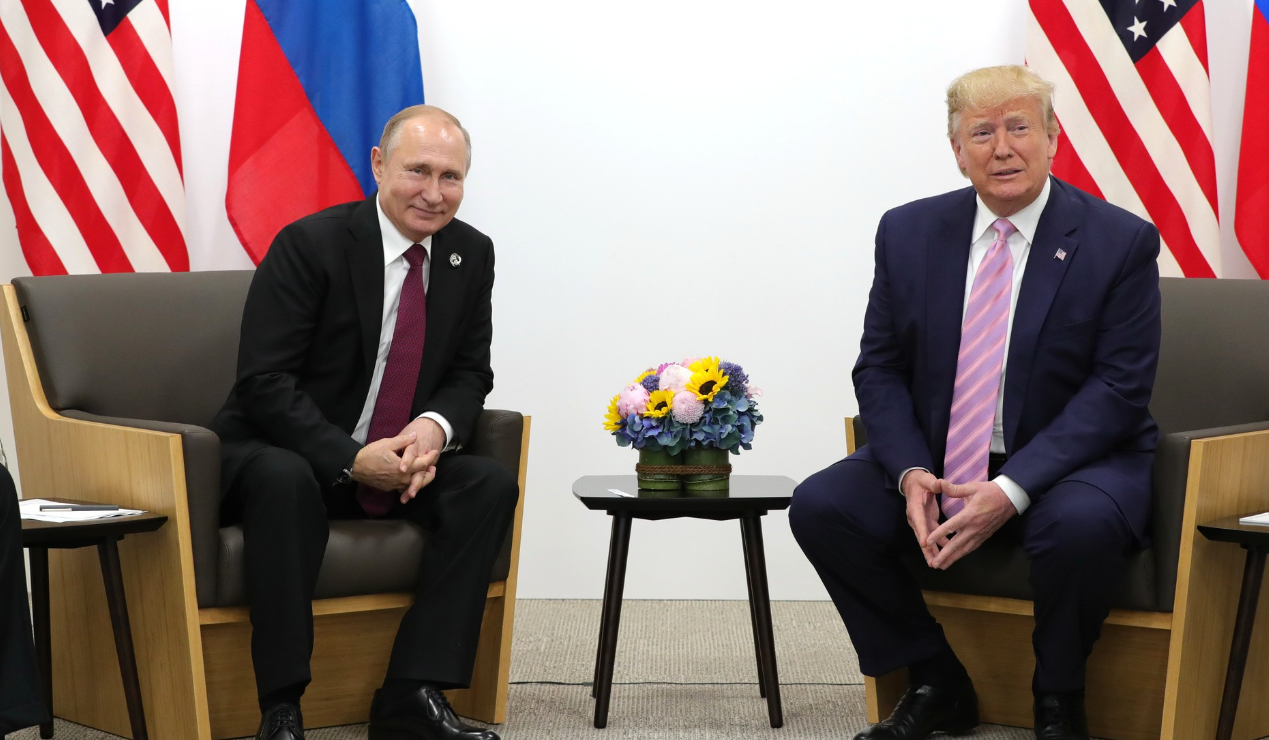
The problem of Russia’s off-the-books oil tankers
Hello! Welcome to your weekly guide to the Russian economy — written by Alexander Kolyandr and Alexandra Prokopenko and brought to you by The Bell. This week our top story is a look at Russia’s shadow oil tanker fleet and what the West could do about it. We also look at the arrest of Deputy Defense Minister Timur Ivanov in one of the highest-profile corruption scandals since the full-scale invasion of Ukraine.
Western alarm grows over Russia’s shadow oil tanker fleet
NATO’s newest member, Sweden, has been raising concerns about an unsafe, shadow fleet of oil tankers used by Russia to export crude oil in defiance of Western sanctions. Speaking on the sidelines of a meeting of European Union foreign ministers, Swedish Foreign Minister Tobias Billstrom, said Monday that these vessels not only “finance Russian military expenditure, but also pose a threat to the environment.” The minister’s logic is simple: the widespread use of tankers of uncertain provenance, in questionable condition and with unclear insurance arrangements could lead to a disastrous accident.
What do we know about Russia’s shadow fleet?
The creation of a shadow fleet was Russia’s response to the imposition of a Western price cap on its oil sales. This measure banned Western countries from transporting, or insuring, Russian oil if it was being sold for more than $60 per barrel. Now, these ships deliver a large share of Russian oil – mostly to India and China.
Such a shadow fleet is not exclusive to Russia: obscure, old, underinsured vessels with a long long list of previous owners under and flying an array of different national flags have long served the trade of sanctioned countries such as Iran, North Korea and Venezuela.
These off-the-book vessels can be divided into a “black” fleet, which is entirely beyond the reach of global maritime regulations, and a “gray” fleet, which has a slightly less impenetrable ownership structure. However, it remains impossible to assess the extent to which vessels from either fleet are complying with Western sanctions.
Nor do we know the precise number of shadow tankers. We only know that since the start of the war in Ukraine, their numbers have grown significantly. A year after the full-scale invasion of Ukraine, oil-trading giant Trafigura calculated that there were 400 shadow vessels carrying Russian oil, and a further 200 transporting oil products.
Two research companies, Vortexa and Windward, have developed a system to track the global shadow fleet. At the end of 2023, they estimated the total number of “black” tankers stood at 1,100 (up 21% since the start of the war in Ukraine), and the number of “gray” vessels was 900 (up 68% since the start of the war). This growth is entirely down to Russia.
One way or another, more than 1,000 ships are engaged in the shadow transportation of Russian crude, oil products and other such cargoes. Estimates vary, but anything from a tenth to a fifth of all seaborne oil could be being transported in such shadow vessels.
At the same time, this is all educated guesswork. Nobody knows the exact number of these tankers – after all, their owners take pains to keep their origin, routes and ownership hidden.
What can the West do about it?
The two obvious responses are (i) to ban the sale of used tankers to Russia and (ii) prevent shadow vessels from traversing strategic straits, for example through the Baltic Sea, Suez Canal or the Bosphorus. However, both these measures have proved almost impossible to implement. The first was derailed by opposition from transport companies and nations with developed maritime trade (older vessels need to go somewhere, and if a sales ban was limited purely to Russia it would be easy to get around). The second measure would involve breaking international maritime convention – and denying a ship passage through international waters could end up sparking a military escalation.
Nevertheless, there is still pressure on countries buying Russian oil, and on countries that control key sea routes (particularly Turkey and Egypt). It’s possible there will be a push to oblige countries like Turkey and Egypt to only allow transit to tankers with transparent insurance arrangements. However, it’s unclear how this would work in practice.It’s more likely that, instead, Western nations will work on identifying shadow tankers one by one, and sanctioning them. Such a designation makes tankers impossible to transport oil, to sell, and significantly increases costs. About 40 tankers are already under sanctions.
Creating a shadow tanker fleet has been expensive for the Kremlin, and if these vessels continue to be sanctioned then even more money will be needed. According to researcher Craig Kennedy, who has been looking at the shadow oil market since early 2022, Russia has spent about $8.5 billion on tanker purchases.
Why the world should care
If the U.S. speeds up the identification and sanctioning of Russian shadow tankers, it will reduce the profitability of Russian oil exports. Some believe that, as a result, Russia will have to increase export volumes. That would, in turn, lower prices, and could even sow discord in oil cartel OPEC+.
Deputy defense minister arrested on corruption charges
Russian Deputy Defense Minister Timur Ivanov, a long-term associate of Defense Minister Sergei Shoigu, was arrested Wednesday on bribery charges. If found guilty, he faces up to 15 years in jail. The arrest was carried out by the military counter-intelligence branch of the Federal Security Service (FSB).
- At the Defense Ministry, Ivanov was responsible for property management, quartering troops, providing housing and medical support for the armed forces, and procurement. This is one of the most cash-rich – and potentially corrupt – areas of the Defense Ministry. Real estate graft was at the heart of the case that brought down Shoigu’s predecessor, Anatoly Serdyukov. Opposition leader Alexei Navalny’s Anti-Corruption Fund released investigations in 2022 and 2023 detailing Ivanov’s suspiciously high income and the luxurious European lifestyle led by his ex-wife Svetlana Manovich even as war raged in Ukraine.
- Ivanov himself denies all the charges. Although Shoigu has said nothing publicly about the arrest of his deputy, he still signed an order dismissing him from his post. Shoigu and Ivanov have worked together since 2012 when Shoigu was governor of Moscow region (Ivanov was his deputy governor). In late 2012, Shoigu went to the Defense Ministry and Ivanov followed in 2016. Between 2013 and 2016, Ivanov was head of Oboronstroi, a state company that specialized in constructing military housing, as well as other social and defense facilities.
- Ivanov is widely considered to be a prominent member of an influential political clan. This clan also includes Shoigu, businessman Gennady Timchenko who is a close friend of President Vladimir Putin, deputy speaker of the Federation Council Yuri Voroboyov, and Vorobyov’s son, Andrei, who is governor of Moscow Region.
- This will likely be a blow to Shoigu, who, according to analysts, has managed to shore up his position after the failures of the initial full-scale invasion. “Over the past 6-12 months, Shoigu has recovered his position in Putin’s eyes and moved noticeably closer to him, successfully managing the flow of information that the president receives about military matters,” said political expert Tatiana Stanovaya. Now, Shoigu faces the distraction of ensuring he is not saddled with a stranger as his new deputy.
Why the world should care
Putin loves to state that the Russian elite is united behind himself, and the war. However, this arrest shows that internal conflicts never went away. Indeed, the war and a slow staffing turnover have only intensified such conflicts.
Figures of the week
- The Finance Ministry published the results of a stress test this week that used a scenario for 2024 of almost zero growth in GDP and household incomes, Reuters reported Wednesday. The scenario presumed the ruble going as low as 97 against the U.S. dollar. As a result of this hugely pessimistic scenario, the ministry said the exchange rate would average 106.9 rubles against the U.S. dollar in 2025. It also predicted that, in 2025, the price of a barrel of Russian oil would fall to $51.8 and GDP growth would be 0.2% (the baseline forecast is 2.3%).
- A requirement for Russia’s largest exporters to sell foreign currency earnings that was introduced last October looks set to be extended to the end of April 2025.
- The “exit tax” imposed on foreigners seeking to sell assets in Russia appears to be hitting about 25% of the amount received by the seller in the transaction, said Vitaly Zhigulin, partner in prominent GR outfit Kesarev Consulting. The tax is officially called a voluntary payment, but it is essential to secure government approval to sell.
- Weekly inflation in Russia the week before April 22 slowed to 0.08% from 0.12% the week before, according to the Economic Development Ministry. There was also a small decline in annual inflation: from 7.83% to 7.82%.
Further reading
Back in Stock? The State of Russia's Defense Industry after Two Years of the War





